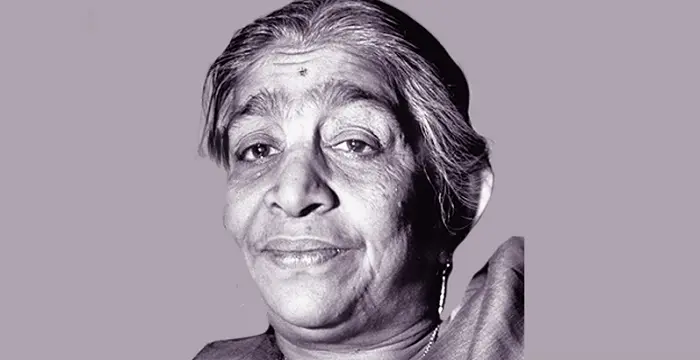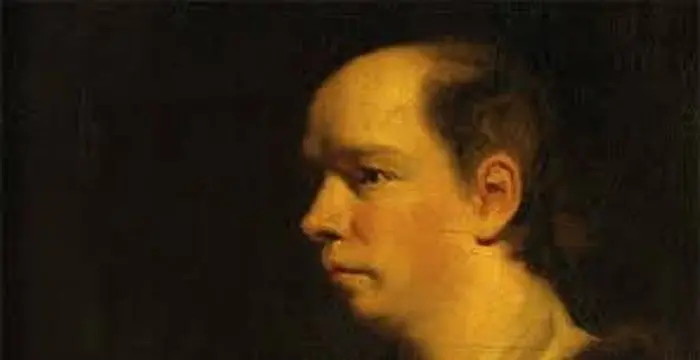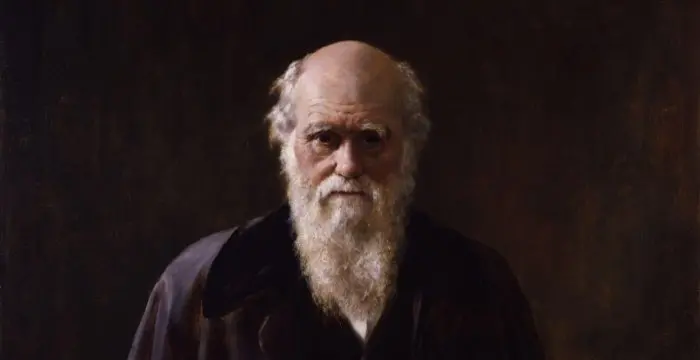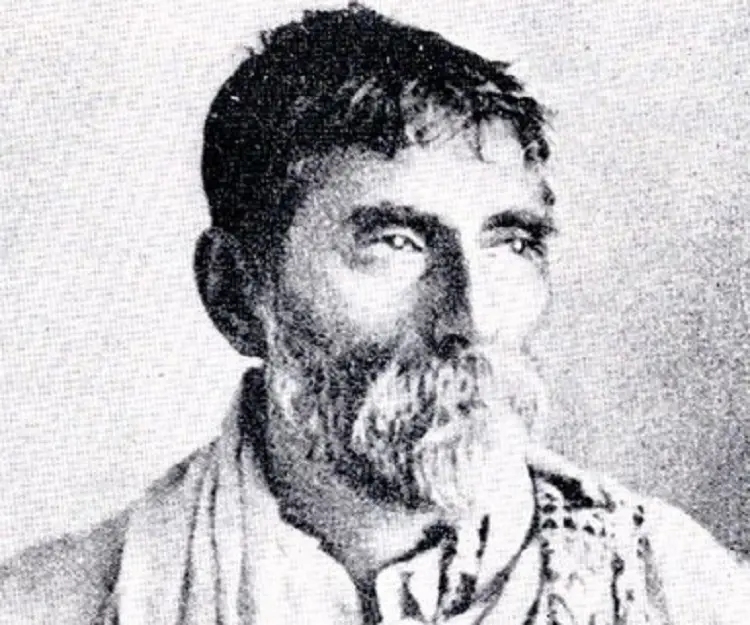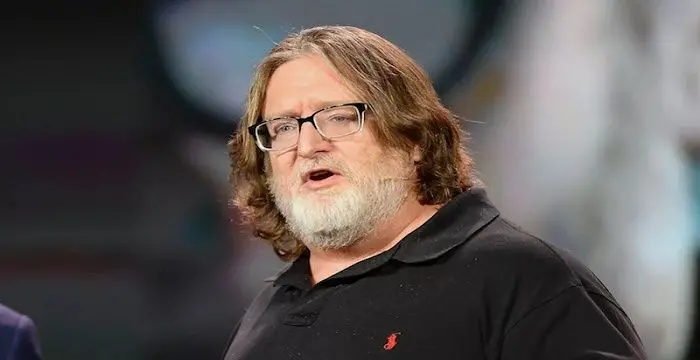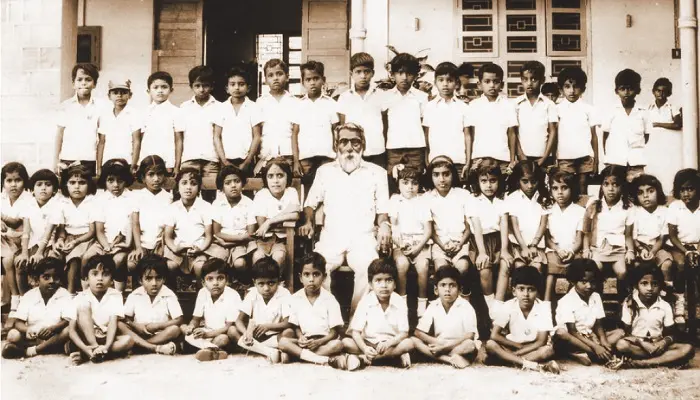
Prafulla Chandra Ray - Philanthropists, Timeline and Childhood
Prafulla Chandra Ray's Personal Details
Prafulla Chandra Ray was a renowned Indian Chemist who founded the chemical manufacture company ‘Bengal Chemicals and Pharmaceuticals Works Ltd.’
| Information | Detail |
|---|---|
| Birthday | August 2, 1861 |
| Died on | June 16, 1944 |
| Nationality | Indian |
| Famous | Philanthropists, University Of Edinburgh, Scientists, Chemists |
| Universities |
|
| Humanitarian Works |
|
| Notable Alumnis |
|
| Founder / Co-Founder |
|
| Birth Place | Khulna |
| Gender | Male |
| Father | Harish Chandra Ray |
| Sun Sign | Leo |
| Born in | Khulna |
| Famous as | Chemist |
| Died at Age | 82 |
// Famous University Of Edinburgh
Sarojini Naidu
Sarojini Naidu was an Indian freedom fighter and poet. Read this brief biography to find more on her life.
Oliver Goldsmith
Oliver Goldsmith was an Anglo-Irish essayist and novelist of the 18th century. Go through this biography to know in details about his life, profile, childhood and timeline.
Charles Darwin
Charles Darwin was one of the most influential figures in human history. Go through this biography to get details about his life, profile and timeline.
Prafulla Chandra Ray's photo
Who is Prafulla Chandra Ray?
Prafulla Chandra Ray was an eminent Indian scientist who is hailed as the “Father of Indian pharmaceuticals”. His work on the nitrites and hyponitrites of metals, especially mercury, earned him fame worldwide. Born in a well-to-do family, he received education at some of the premier educational institutes in the country. An illness in his childhood days forced him to discontinue studies for a while, but he made the best possible use of the time and harboured a liking for literature. He pursued higher education from the ‘University of Edinburgh’ and stayed on a year there to conduct further research. Returning to his homeland, Ray started his academic at the Presidency College and it was during his tenure that he discovered the compound mercurous nitrite. The pioneering chemist, founded a chemical manufacturing company, ‘Bengal Chemicals and Pharmaceuticals Works Ltd.’. He lived an astute life and spent most of his life serving the poor and contributing toward scientific advancements. He remained associated with the ‘Sadharan Brahmo Samaj’ for most of his life and was even nominated the President of the division. A revered figure, many institutions have named after this scientist such as the ‘Acharya Prafulla Chandra College’, ‘Prafulla Chandra College’ in Calcutta, and the ‘Bagerhat P.C College’ of Bangladesh. Read on to know more about his life and works
// Famous Philanthropists
Kevin Costner
Kevin Costner is an American actor, director and singer who is best known for his portrayal of rugged individuals with complex emotions. This biography provides detailed information about his childhood, life, achievements, works & timeline
Stevie Nicks
Stevie Nicks is singer-songwriter rated among the 100 Greatest Singers of All Time by Rolling Stone Magazine. This biography of Stevie Nicks provides detailed information about her childhood, life, achievements, works & timeline.
Princess Ameerah Al-Taweel
Princess Ameerah Al-Taweel is a Saudi Arabian princess widely recognized for her philanthropy and activism. Check out this biography to know about her childhood, family, life history and achievements.
Childhood & Early Life
Born to a rich land owner Harish Chandra Ray in Raruli-Katipara village, Bangladesh, on August 2, 1861, Prafulla Chandra Ray, was the younger of two brothers.
He was enrolled at a local school founded by his well-to-do family, for his early education till 1870, when they moved to Calcutta.
In Calcutta, the two brothers enrolled at one of the oldest schools of the city, the ‘Hare School’.
It was in 1874, that young Prafulla contracted dysentery and was forced to discontinue his studies. For the next two years that he spent in Raruli-Katipara, he harboured a love for reading and later learnt the languages Latin and French.
In 1879 after Ray completed his matriculation from the ‘Albert School’, he pursued higher education from the ‘Vidyasagar College’. As the institution had no facility for teaching science subjects, he took lessons in physics and chemistry at the ‘Presidency College’.
He won the ‘Gilchrist Prize Scholarships’ in 1882 and he went on to pursue his bachelor’s degree in science from the ‘Edinburgh University’ in Scotland. Other than natural sciences, he even studied history, political science and literature.
After graduating he pursued higher studies from Edinburgh and worked on his doctoral dissertation, upon completion of which he was awarded a doctoral degree in 1877.
Career
He continued further research on his thesis, for a year, which dealt with the isomorphous mixtures and then returned to Calcutta in 1888. The following year he was appointed to a temporary position at the ‘Presidency College’ in the city.
As India was then a British colony, the natives were kept aloof from the highly ranked positions despite their qualifications and merit. Though he tried to attract the attention of the authorities but his pleas fell on deaf ears.
In 1896, he published the results of his research on nitrites of mercury; he had developed the stable compound mercurous nitrite and it implored other scientists to study the nitrites of metals and amines.
He founded the ‘Bengal Chemicals and Pharmaceuticals Works Ltd.’ in 1901 with a capital of 700 INR. The company has expanded over the years and currently deals with manufacture of Alum, drugs and pharmaceuticals and household products such as naphthalene, floor and toilet cleaner.
Over the course of next few years he studied many ancient texts on science and the result was the book ‘A History of Hindu Chemistry from the Earliest Times to the Middle of Sixteenth Century’, published in 1902. Continuing his research, he published a second edition, six years later.
Ray left his job at Presidency to accept the position of ‘Palit Professor’ at the ‘Rajabazar Science College’ in 1916. During his tenure he researched compounds of transition-metals such as platinum and iridium and sulphides of organic substances.
By the year 1920, this eminent chemist had penned more than 100 scientific literature and many of them were published in the journal of ‘Indian Chemical Society’. The same year, he presided over the annual meet of ‘Indian Science Congress’, which is one of the foremost scientific associations of the country.
An ardent social worker, he started a relief organisation when the state of Bengal was affected by massive floods in 1923. The ‘Bengal Relief Committee’ gathered funds and goods worth 2.5 million INR, which was distributed among the homeless and destitute.
A voracious reader and lover of literature, he penned his own life story in the book entitled ‘Life and Experience of a Bengali Chemist’, in 1932. Three years later he came up with the second edition of his autobiography.
Major Works
Prafulla Chandra ray was best known for his work on nitrites of mercury, which paved way for study of nitrites of other metals and amines. His discovery of a stable compound of mercurous nitrite earned him fame and recognition within the scientific community.
Awards & Achievements
Prafulla Chandra Ray was a recipient of the ‘Companion of the Order of the Indian Empire’, an honour that was conferred upon him in the year 1911.
This eminent chemist was awarded several honorary doctorates which includes one from the ‘Durham University’ and ‘Dhaka University’.
Personal Life & Legacy
Ray never married and remained dedicated toward sscientific advancement and elevation of the poor. He provided grants and donations to many scientific institutions to be used for research purposes.
Starting from his sixtieth anniversary, his salary was granted to the ‘Calcutta University’ which was utilised to expand the ‘Department of Chemistry’ and promote research at the ‘University College of Science’.
Several awards such as the ‘Nagarjuna Prize’ for chemistry and ‘Ashutosh Mukherjee Award’ for biology were established by this eminent scientist.
On June 16, 1944, this eminent Indian scientist breathed his last in his Calcutta residence. His death was mourned by his family, friends and students who regarded Ray in high regard.
// Famous Chemists
Henry Cavendish
Henry Cavendish was a theoretical chemist and physicist, renowned for discovery of hydrogen and calculation of the mass of earth. To know more about his childhood, profile, timeline and career read on
Walter Kohn
Nobel Laureate Walter Kohn was an Austrian-born American theoretical chemist and physicist. Check out this biography to know about his childhood, life, achievements, works & timeline.
Jabir Ibn Hayyan
Jabir Ibn Hayyan was a medieval era polymath. Check out this biography to know about his life, works and achievements.
Prafulla Chandra Ray biography timelines
- // 2nd Aug 1861Born to a rich land owner Harish Chandra Ray in Raruli-Katipara village, Bangladesh, on August 2, 1861, Prafulla Chandra Ray, was the younger of two brothers.
- // 1870He was enrolled at a local school founded by his well-to-do family, for his early education till 1870, when they moved to Calcutta.
- // 1874It was in 1874, that young Prafulla contracted dysentery and was forced to discontinue his studies. For the next two years that he spent in Raruli-Katipara, he harboured a love for reading and later learnt the languages Latin and French.
- // 1877After graduating he pursued higher studies from Edinburgh and worked on his doctoral dissertation, upon completion of which he was awarded a doctoral degree in 1877.
- // 1879In 1879 after Ray completed his matriculation from the ‘Albert School’, he pursued higher education from the ‘Vidyasagar College’. As the institution had no facility for teaching science subjects, he took lessons in physics and chemistry at the ‘Presidency College’.
- // 1882He won the ‘Gilchrist Prize Scholarships’ in 1882 and he went on to pursue his bachelor’s degree in science from the ‘Edinburgh University’ in Scotland. Other than natural sciences, he even studied history, political science and literature.
- // 1888He continued further research on his thesis, for a year, which dealt with the isomorphous mixtures and then returned to Calcutta in 1888. The following year he was appointed to a temporary position at the ‘Presidency College’ in the city.
- // 1896In 1896, he published the results of his research on nitrites of mercury; he had developed the stable compound mercurous nitrite and it implored other scientists to study the nitrites of metals and amines.
- // 1901He founded the ‘Bengal Chemicals and Pharmaceuticals Works Ltd.’ in 1901 with a capital of 700 INR. The company has expanded over the years and currently deals with manufacture of Alum, drugs and pharmaceuticals and household products such as naphthalene, floor and toilet cleaner.
- // 1902Over the course of next few years he studied many ancient texts on science and the result was the book ‘A History of Hindu Chemistry from the Earliest Times to the Middle of Sixteenth Century’, published in 1902. Continuing his research, he published a second edition, six years later.
- // 1911Prafulla Chandra Ray was a recipient of the ‘Companion of the Order of the Indian Empire’, an honour that was conferred upon him in the year 1911.
- // 1916Ray left his job at Presidency to accept the position of ‘Palit Professor’ at the ‘Rajabazar Science College’ in 1916. During his tenure he researched compounds of transition-metals such as platinum and iridium and sulphides of organic substances.
- // 1920By the year 1920, this eminent chemist had penned more than 100 scientific literature and many of them were published in the journal of ‘Indian Chemical Society’. The same year, he presided over the annual meet of ‘Indian Science Congress’, which is one of the foremost scientific associations of the country.
- // 1923An ardent social worker, he started a relief organisation when the state of Bengal was affected by massive floods in 1923. The ‘Bengal Relief Committee’ gathered funds and goods worth 2.5 million INR, which was distributed among the homeless and destitute.
- // 1932A voracious reader and lover of literature, he penned his own life story in the book entitled ‘Life and Experience of a Bengali Chemist’, in 1932. Three years later he came up with the second edition of his autobiography.
- // 16th Jun 1944On June 16, 1944, this eminent Indian scientist breathed his last in his Calcutta residence. His death was mourned by his family, friends and students who regarded Ray in high regard.
// Famous Scientists
Juliane Koepcke
Juliane Koepcke is a German-Peruvian biologist, who was the lone survivor among the 92 passengers and crew of the ill-fated LANSA Flight 508 that crashed in the Peruvian rainforest on 24 December 1971. Know more about her life in this biography.
Henry Cavendish
Henry Cavendish was a theoretical chemist and physicist, renowned for discovery of hydrogen and calculation of the mass of earth. To know more about his childhood, profile, timeline and career read on
Konstantin Tsiolkovsky
Konstantin Tsiolkovsky was a Russian rocket scientist and a pioneer of astronautics. This biography provides detailed information about his childhood, family, personal life, career, achievements, etc.
Gabe Newell
Gabe Newell is an American computer programmer and businessman, best known as the co-founder of ‘Valve Corporation.’ This biography provides detailed information about his childhood, family, personal life, career, etc.
Grigori Perelman
Grigori Perelman is a Russian mathematician who is best known for his contributions to Riemannian geometry and geometric topology. Check out this biography to know about his childhood, family life, achievements and fun facts about him.
Eduardo Saverin
Eduardo Luiz Saverin is a Brazilian internet entrepreneur and investor. This biography profiles his childhood, life, career, achievements, and timeline
Prafulla Chandra Ray's FAQ
What is Prafulla Chandra Ray birthday?
Prafulla Chandra Ray was born at 1861-08-02
When was Prafulla Chandra Ray died?
Prafulla Chandra Ray was died at 1944-06-16
Where was Prafulla Chandra Ray died?
Prafulla Chandra Ray was died in Kolkata
Which age was Prafulla Chandra Ray died?
Prafulla Chandra Ray was died at age 82
Where is Prafulla Chandra Ray's birth place?
Prafulla Chandra Ray was born in Khulna
What is Prafulla Chandra Ray nationalities?
Prafulla Chandra Ray's nationalities is Indian
What was Prafulla Chandra Ray universities?
Prafulla Chandra Ray studied at University Of Edinburgh, University of Calcutta, Presidency University, Kolkata, Vidyasagar College, University of Edinburgh, Hare School, 1887 - University of Edinburgh
What was Prafulla Chandra Ray notable alumnis?
Prafulla Chandra Ray's notable alumnis is University Of Edinburgh
Which company or organization was founded by Prafulla Chandra Ray?
Prafulla Chandra Ray was the founder/co-founder of Bengal Chemicals and Pharmaceuticals
Who is Prafulla Chandra Ray's father?
Prafulla Chandra Ray's father is Harish Chandra Ray
What is Prafulla Chandra Ray's sun sign?
Prafulla Chandra Ray is Leo
How famous is Prafulla Chandra Ray?
Prafulla Chandra Ray is famouse as Chemist
